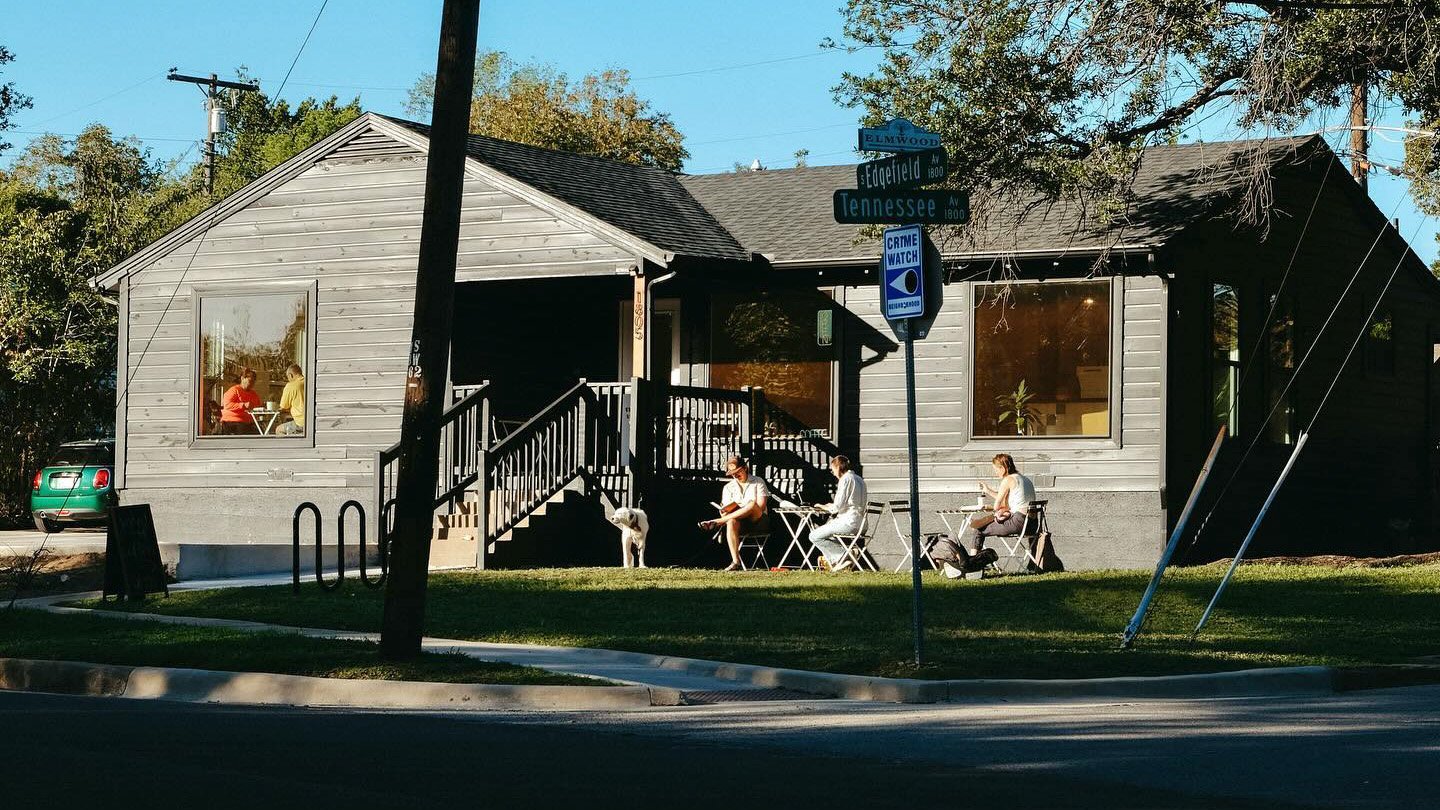A Slow and Steady (but Bittersweet) Victory Against Arcane Parking Mandates
By Asia Mieleszko

When Germán Sierra bought a one-story home in 2020, he anticipated the types of headaches and hiccups that accompany every renovation. His dream was to convert the home—already zoned for commercial use—into a coffee shop and community space. What he didn’t expect, however, was that regulations dating back to 1965 would ultimately thwart his plans to open Graph Coffee.
Three years later, what started out as Graph Coffee has now finally opened as Slow and Steady, a reference to his years-long battle with Dallas’ restrictive parking mandates and a guiding philosophy for a business that had to battle so much just to serve a cup of (really good) coffee.
Missed the story the first time around? Read “Death By Parking.”
“Suddenly, you get the green light. You finally get everything that you’ve been fighting for so long,” Sierra explained. “And in no time, you have to do everything that you didn’t have the time or energy, you know, to do before.”
When Sierra first tried to open his coffee shop, a decades-old Dallas code mandating one parking spot for every 100 square feet stood in his way. Providing the requisite number of parking spaces would necessitate demolishing part of his own recently renovated property or the one next door. Neither of these were options as far as he was concerned and so began a lengthy and expensive process to procure a variance from the Board of Adjustments.
When asked to provide community support, he collected dozens of letters from locals. When asked to provide a traffic study, he paid city traffic engineers thousands of dollars to perform several. Yet, no matter what Sierra was able to prove, the Board of Adjustments refused to budge. He had the support of three on the board of five, a majority, but not enough in a city which requires at least 75% of the board to be in agreement. Three out of five votes amounts to only 60%.
As this stalemate waged on, Sierra wasn’t just losing out on revenue his future coffee shop would generate. He couldn’t even begin preparing for inspections, certifications, and all the hurdles a small business owner can expect ahead of a launch. In fact, by the time he was able to invite inspectors over, he laughed at how relatively painless it was compared to what he’d endured with the Board of Adjustments.
“Once I passed [the final inspection], the inspector asked me, ‘So, when are you planning to open?’” Sierra recalled. “Tomorrow!” he replied, in disbelief that he finally had the green light to do so. Months behind schedule, he wanted to begin recouping his losses immediately. He also needed to learn the ropes. He wasn’t able to focus on operations, the daily needs of running a coffee shop, when every day for nearly two years was defined by uncertainty over whether his coffee shop would even exist.
At the tail end of August 2023, all the paperwork, permitting, inspections, and certifications were completed. Days later in September, he quietly opened his doors, effectively soft launching the newly rebranded Slow and Steady Coffee. Sierra spent the next two months adjusting to life as a coffee shop owner and preparing Slow and Steady for a grand opening, which ultimately took place on November 11, 2023.
A Bittersweet Relief
Slow and Steady didn’t ultimately triumph over Dallas’ arcane parking mandates. Despite bottomless community support—“they really came out to bat for me since the very beginning”—and all the evidence Sierra could muster disproving the demand for parking, those final two members of the Board of Adjustments could not be convinced. Sierra was not granted a variance.
Opening Slow and Steady took demolishing his garage, nearly half of the square footage of the one-story structure.
Naturally, Sierra tried whatever he could to preserve the garage. It was a matter of practicality: running a coffee shop demands storage for equipment, inventory, and assorted coffee shop paraphernalia. The garage was envisioned as a closet, not a space for potential car-driving customers. But that didn’t matter to the Board of Adjustments. What mattered for the parking calculus was the total square footage of the space, and according to the board, he had “too much.”
Sacrificing storage wasn’t enough. “Restaurants have some of the strictest parking requirements,” he explained, “whereas splitting the space into something between an office and a to-go eatery awarded me some leniency when it came to parking.”
In the end, Sierra not only had to slice his property in half, he had to reapply under two different uses. At least this time, he was guaranteed the green light. It also meant he was only liable to provide four parking spaces, something he could easily accommodate, compared to over a dozen in the earlier mandate.
It wasn’t an easy choice, but he couldn’t afford to delay the opening any longer, nor the expenses associated with petitioning for a variance with no end in sight.
Now, three months into business since the official launch of Slow and Steady, Sierra appreciates how many patrons come to caffeinate by foot or bicycle. “I just love seeing how many people use the bike rack I put out there,” he told me. He even offers 10% off on Saturdays for customers who walk.
View this post on Instagram
A post shared by JULIAN VIGIL (@_julianfilm)
It’s been especially heartwarming to welcome customers cognizant of all the hassles Sierra weathered in the last two years. “Remember the inspector who asked when I’m going to open?” Sierra recalled. “The next time I saw him, he was a customer. That was such a cool moment.”
When You Make Space for Parking, What Do You Lose?
If—or perhaps, when—Dallas follows suit with dozens of cities across the country scrapping costly parking mandates, Sierra can entertain restoring the garage. These rules, often dating back to the 1960s, not only restrict how business owners and homeowners can improve upon their own property, they confine cities to a future of auto-centric design.
With the average parking spot measuring nearly 350 square feet, more space must be ceded for asphalt than the actual people whom the business plans to serve or the home is designed to house. When a place is designed to prioritize the geometry of cars, rather than the experience of people, the latter suffers. Learn more about how parking mandates and subsidies affect your city here.
Article by Asia Mieleszko | @strongtowns.org
